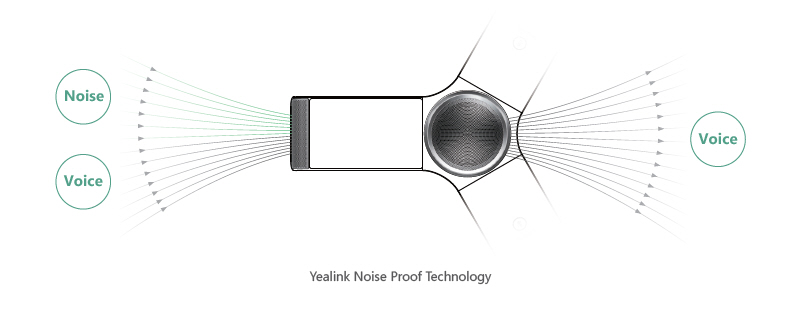Introduction
In the realm of modern communication, clarity in voice calls has become paramount, especially with the rise of VoIP (Voice over Internet Protocol) phone services. However, many users are often unaware of how various factors affect their calling experience. One of these critical factors is packet loss. This article delves deep into understanding the relationship between packet loss and voice clarity, exploring its implications on VoIP phone services and offering insights into how to mitigate its effects.
Understanding the Relationship Between Packet Loss and Voice Clarity
Packet loss occurs when data packets traveling across a network fail to reach their destination. In VoIP communications, this can lead to choppy audio or dropped calls, severely impacting voice clarity. But what causes packet loss?
What Is Packet Loss?
Packet loss refers to the failure of one or more transmitted packets to arrive at their intended destination. It is typically expressed as a percentage of packets lost compared to total packets sent. In an ideal scenario, this percentage should be zero; however, real-world conditions often result in varying degrees of packet loss.
How Does Packet Loss Affect Voice Clarity?
The impact of packet loss on voice clarity can be significant. When packets are lost during transmission:
- Audio Quality Deterioration: Users may experience distortions or interruptions in their conversations. Latency Issues: Delays can occur as devices attempt to retransmit lost packets. Frustration for Users: A lack of clear communication can lead to misunderstandings and frustration among users.
Why Is Voice Clarity Important in VoIP Services?
Voice clarity plays a crucial role in effective communication. For businesses relying on VoIP phone services for client interactions, any disruption can reflect poorly on professionalism and customer service. High-quality voice clarity ensures that messages are conveyed accurately without misinterpretation.
Common Causes of Packet Loss
Network Congestion
One prevalent cause of packet loss is network congestion. When too many devices compete for bandwidth simultaneously, routers may drop packets to manage traffic flow.
Faulty Hardware
Outdated or malfunctioning hardware—like routers or switches—can lead to issues with data transmission, contributing to packet loss.
Wireless Connections vs Wired Connections
Wireless connections are more prone to interference from physical obstacles or competing wireless signals than wired connections. This makes them susceptible to higher rates of packet loss.
Poor Network Configuration
Improperly configured networks can impede data transmission efficiency, leading to increased chances of packet loss.
Identifying Packet Loss in VoIP Calls
Monitoring Tools for Packet Loss Detection
Several tools can help identify packet loss VoIP Oregon during VoIP calls:
- Ping Tests: Send multiple packets and measure how many return successfully. Traceroute Utilities: Track the path data takes through the network. VoIP Monitoring Software: These tools provide real-time analysis and alert users about potential issues.
Symptoms Indicating Packet Loss
Users may notice several signs indicating potential packet loss:
Choppy audio Delay in conversation responses Echoes during calls Complete call dropsMitigating Packet Loss for Better Voice Clarity
Improving Network Infrastructure
To reduce packet loss, investing in reliable networking equipment is crucial:
- Upgrade outdated routers or switches. Ensure firmware is up-to-date.
Optimizing Bandwidth Usage
Consider implementing Quality of Service (QoS) settings on your router:
Prioritize VoIP traffic over non-essential services. Limit bandwidth usage by other applications during important calls.Using Wired Connections Whenever Possible
Whenever feasible, opt for wired connections rather than wireless ones to minimize interference and improve stability.
VoIP Phone Service Features That Enhance Voice Clarity
Echo Cancellation Technology
Many modern VoIP systems incorporate echo cancellation technology that reduces feedback noise during calls, enhancing overall voice quality.
Adaptive Jitter Buffers
These buffers help manage variations in data arrival times—ensuring a smoother audio experience despite fluctuations in network performance.
Redundancy Systems for Reliability
Implementing redundancy measures—such as backup internet connections—can ensure continuity even if one connection experiences issues.
The Role of Internet Speed in Voice Clarity
Minimum Speed Requirements for VoIP Services
To maintain clear communication via VoIP phone services:

- A minimum upload speed of 100 kbps per concurrent call is recommended. Download speeds should ideally exceed 1 Mbps for optimal performance.
Testing Your Internet Speed
Regularly testing your internet speed using online tools can help you gauge whether your connection meets these requirements.
Understanding Jitter and Its Impact on Call Quality
Jitter refers to variations in latency that can disrupt data transmission over a network. High levels of jitter can exacerbate the effects of packet loss, leading to further degradation in voice clarity during calls.
FAQs
Q1: What level of packet loss is considered acceptable?
A1: Ideally, there should be no packet loss; however, levels below 1% are generally deemed acceptable for most applications.
Q2: Can I fix packet loss myself?
A2: Yes! Troubleshooting your network setup by updating hardware or optimizing settings can often resolve issues related to packet loss.
Q3: How does latency relate to voice clarity?
A3: Latency refers to delays before data starts transmitting; excessive latency can lead to awkward pauses that affect conversational flow and perceived clarity.
Q4: Are there specific VoIP providers known for better quality service?
A4: Many providers offer high-quality service with features designed specifically for optimal call quality; researching reviews and conducting trials is recommended before choosing one.
Q5: Is it true that wired connections always beat wireless ones?

Q6: Can software solutions help with mitigating packet loss?
A6: Absolutely! Networking software aimed at optimizing traffic flow or monitoring performance metrics can effectively enhance overall call quality by addressing underlying issues promptly.

Conclusion
Understanding the relationship between packet loss and voice clarity is vital not just for individual users but also businesses heavily reliant on effective communication through VoIP phone services. Mitigating the effects of packet loss requires a multifaceted approach—from upgrading hardware and optimizing bandwidth use to employing advanced technologies designed specifically for improving call quality. By taking proactive steps towards enhancing network infrastructure and utilizing appropriate tools, both consumers and enterprises alike will find themselves enjoying clearer conversations devoid of frustrating interruptions due to poor connectivity conditions.